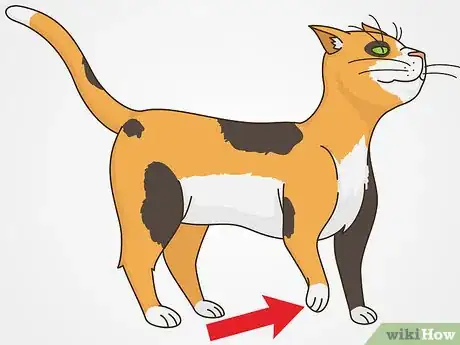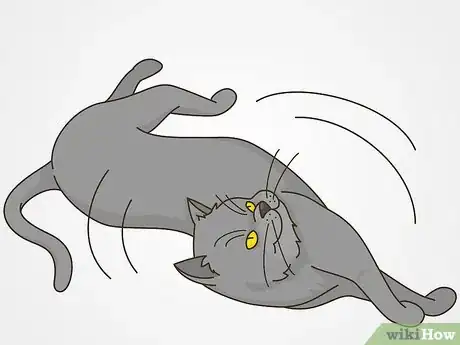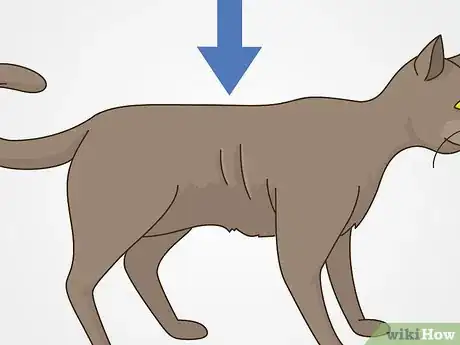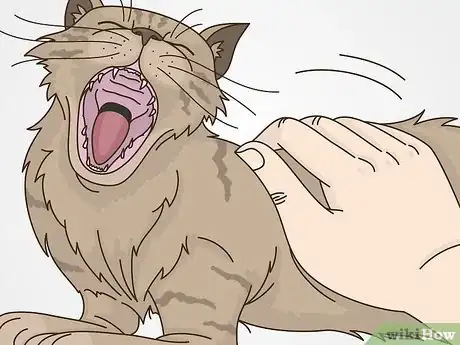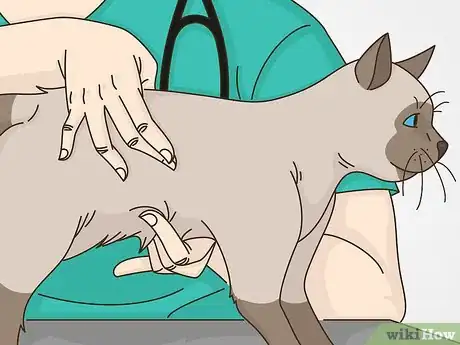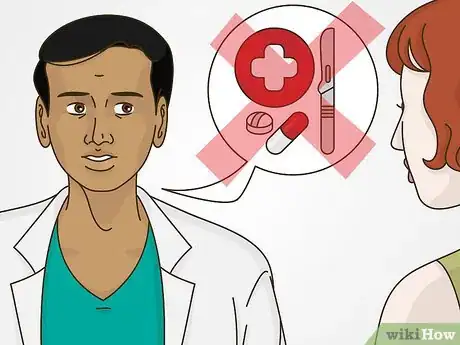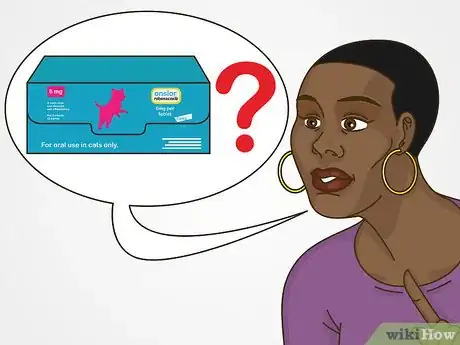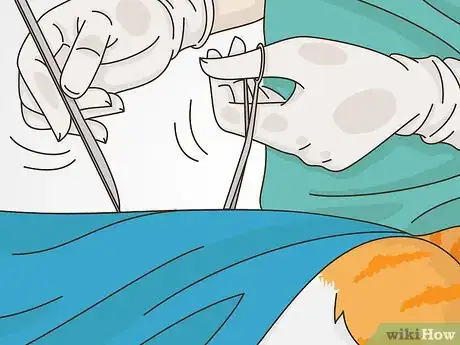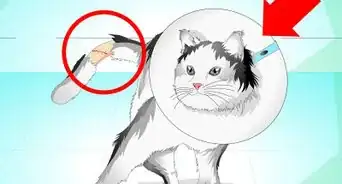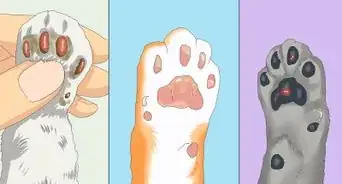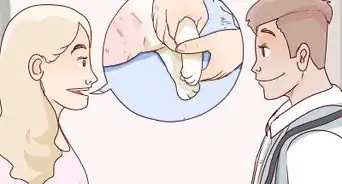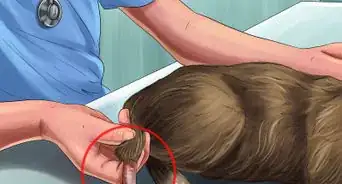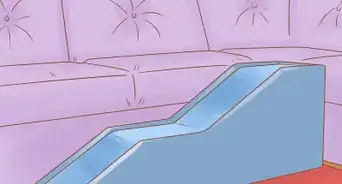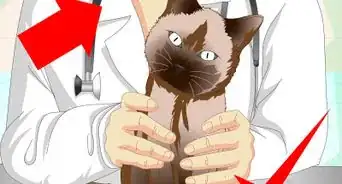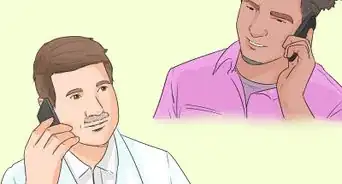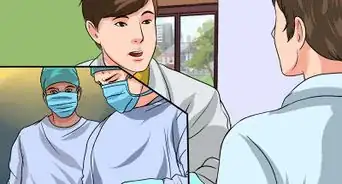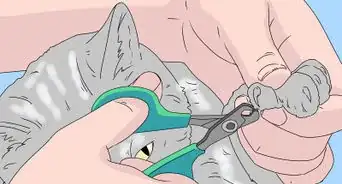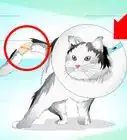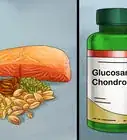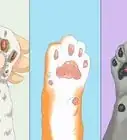This article was co-authored by Deanne Pawlisch, CVT, MA. Deanne Pawlisch is a Certified Veterinary Technician, who does corporate training for veterinary practices and has taught at the NAVTA-approved Veterinary Assistant Program at the Harper College in Illinois and in 2011 was elected to the board of the Veterinary Emergency and Critical Care Foundation. Deanne has been a Board Member of the Veterinary Emergency and Critical Care Foundation in San Antonio, Texas since 2011. She holds a BS in Anthropology from Loyola University and an MA in Anthropology from Northern Illinois University.
This article has been viewed 17,480 times.
Spondylosis deformans is a condition where the vertebrae along the spine grow small spurs, sometimes pressing into the spine. Often, this condition develops because of spine degeneration due to aging. Your cat may not show any symptoms, and you likely won't know your cat even has this condition unless your vet happens to take an x-ray for something else.[1] However, if you suspect your cat is having a problem, you can have the cat diagnosed by the vet, typically using an x-ray. Nonetheless, your vet may end up recommending no treatment at all, since the condition doesn't always cause problems and the treatment is often ineffective.
Steps
Watching for Symptoms
-
1Pay attention to a stiff gait. Sometimes, the spurs on the vertebrae in the back press into the spine, affecting the cat's gait and other movements. Usually, it's because the spurs have made it more difficult for the cat to move. If you notice that your cat is limping or walking strangely, contact your vet.[2]
-
2Check for decreased flexibility. This disease can also affect how much the cat moves its spine. Therefore, you may notice the cat isn't turning over as easily as it used to, or that it's having trouble stretching or cleaning itself.[3]Advertisement
-
3Look for loss of muscle mass. Another symptom that can appear with this condition is the atrophy of muscle along the spine. This symptom can take longer to appear than other symptoms.[4]
-
4Notice back pain. While this condition doesn't appear to be painful for every cat, it can be. You may notice your cat wincing, pulling back, or crying out in pain when you stroke parts of its back where the spurs are located.[5]
Seeing the Veterinarian
-
1Be ready for a physical examination. Your vet will begin with a physical examination. They will note whether they see any problems in the cat's gait or flexibility, as well as if the cat seems in pain. However, this condition cannot be definitively diagnosed with a physical examination.[6]
- While the examination is going on, let the vet know if your cat has had any spinal issues in the past.
-
2Expect x-rays. The most common way to diagnose this condition is through the use of x-rays. The vet will use them to examine the cat's spine. In turn, the vet will be able to determine if the cat has spurs in that location.[7]
- The vet may need to take x-rays from multiple angles to see the bone spurs properly.
-
3Ask about MRIs or CT scans. In some cases, an MRI or CT scan may be needed to properly diagnose this disease. Your vet might do this test, or they might send you on to a specialist for advanced imaging.[8]
Treating Spondylosis Deformans
-
1Skip treatment. Often, your cat will not need any treatment for this condition, as the spine degeneration is usually due to aging. If your cat is not in any pain, your vet may decide that treatment isn't necessary.[9]
-
2Ask about pain relievers. When a cat is in pain from this condition, the vet will often prescribe a pain medication. However, make sure you only give pain medication under the direction of a vet, as many human pain relievers are toxic to cats. Usually, the vet will prescribe an NSAID pain reliever.[10]
-
3Discuss weight loss. If your cat is overweight, it may help for the cat to lose weight. Ask your vet about whether your cat is a good candidate for this option. If the vet says yes, have them discuss a weight loss plan with you.[11]
- Generally, to help your cat lose weight, you need to decrease how much food it eats. A typical indoor cat needs 20 calories per pound of weight per day to maintain its weight, so an 8 pound cat needs 160 calories to maintain its weight.
- For an indoor cat to lose weight, you need to decrease its caloric intake by 40 calories. Therefore, an 8-pound cat would need 120 calories a day to lose weight.
- For outdoor cats, you can increase the caloric intake to 35 calories per pound to maintain its current weight. The adjustment for losing weight is the same.
-
4Expect surgery only under extreme conditions. Surgery may be necessary if the spurs are affecting the cat's spine. However, often the vet will not recommend this course of action. Most of the time, the spurs grow back, since they are trying to stabilize the spine.[12]
References
- ↑ https://vcahospitals.com/know-your-pet/spondylosis-deformans-in-cats
- ↑ http://www.vetstreet.com/care/spondylosis-deformans
- ↑ https://vcahospitals.com/know-your-pet/spondylosis-deformans-in-cats
- ↑ https://vcahospitals.com/know-your-pet/spondylosis-deformans-in-cats
- ↑ https://vcahospitals.com/know-your-pet/spondylosis-deformans-in-cats
- ↑ https://www.vetary.com/cat/condition/spine-degeneration
- ↑ http://www.vetstreet.com/care/spondylosis-deformans
- ↑ https://vcahospitals.com/know-your-pet/spondylosis-deformans-in-cats
- ↑ https://www.vetary.com/cat/condition/spine-degeneration
About This Article
Before you diagnose and treat spondylosis deformans in your cat, watch for common symptoms such as limping, having decreased flexibility, and losing muscle mass around the spine area. Additionally, notice if your cat winces or cries out in pain when touched, as this can indicate that it has spine spurs. If your cat has any of these symptoms, take it to the vet as soon as possible to get a diagnosis. Once your cat has been diagnosed, you may need to give it a prescription pain medication, or if the spurs are severe, get spine surgery. To learn how to help your cat lose weight to relieve back pain, read more from our Veterinary co-author.
